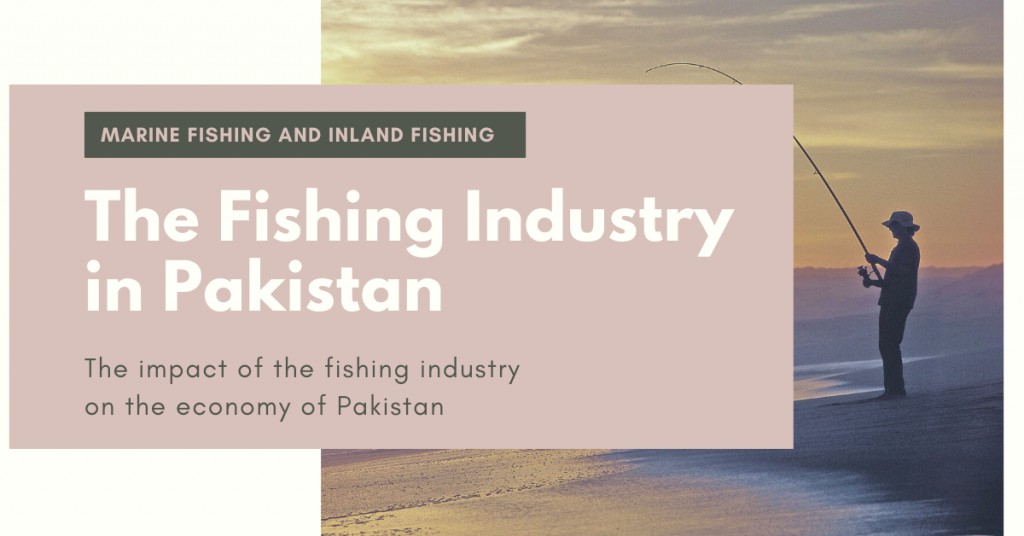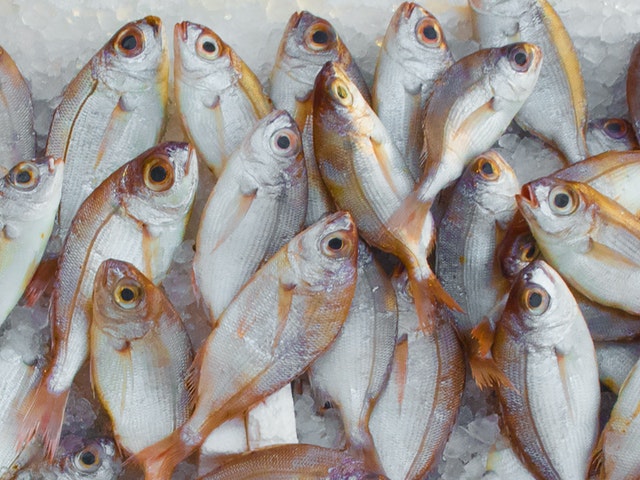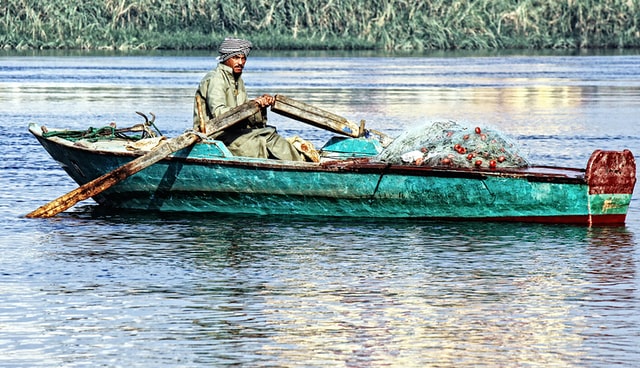
The fishing industry refers to any commercial or non-commercial activity that is related to fish and fish products. This industry plays a very important part in the economy of Pakistan.
Pakistan has massive potential to develop its fishing industry and generate massive revenue in order to boost its financial activities.
There are various aspects of this topic that need to be discussed. So, let’s start from the very beginning without further introductions.
Fishing in Pakistan:
Fishing is an occupation of those communities that settle along the rivers, lakes and seas. The breeding of fishes is known as fish farming or “aquaculture” (aqua refers to water).
To breed fishes, the people in Pakistan use man-made rectangular ponds. Some basic charactersticks of these ponds are:
- Man-made.
- Rectangular in shape.
- Made up of mud and cement to prevent the leakage of water.
- Trees planted around to provide shade and prevent the evaporation of water from the ponds.
The export of fishes contributes to 6% of the foreign exchange of Pakistan which can be increased with the development of the fishing industry in Pakistan.
Note: The European countries hardly import any canned fish from Pakistan due to their concerns about the unhygienic conditions in the canning industries.
This takes us to another important topic about fishing which is the methods of fishing and their types.

Methods of fishing
There are two main methods of fishing, those are:
- Marine fishing
- Inland fishing
Marine Fishing:
This type of fishing is practised less as compared to Inland fishing in Pakistan but it contributes to a greater fish catch. The reason is simple. It is that in this method, mechanized boats and gill nets are used along with other refrigerating, salting, drying and canning facilities.
This means that this method is more advanced that Inland fishing. Similarly, marine fishing is mostly done across coasts and the fisherman move deep into the sea (up to 50 km sometimes) in order to catch fishes.
Related: Power Resources | GCE O Level | Interesting Notes
The Sindh coast makes 30% of the coastline in Pakistan while the Makran coast makes 70% of the coastline in Pakistan. However, the fish catch on the Sindh catch is greater as compared to the Makran coast mainly because of the development over there.
In Sindh, Karachi is the main fishing centre while Gwadar in Balochistan is being developed over recent years.
What improvement is being done in order to improve the fishing industry along the Makran coast?
Some of the developments are:
- Ice refrigeration plants
- The setting of canning industries
- Drying and salting facilities
There are two main types of Marine fishing. One is subsistence fishing and the other is commercial fishing.

Subsistence Fishing:
In this type of fishing, the fishermen catch fishes for his family. This means that the fish is caught for one’s own consumption.
Likewise, fish is the major component of their diet and the fish catch does not help them financially. Only if the fish catch is greater than their requirement, the access is sold. However, this case is rear.
In subsistence fishing, traditional methods and nets along with small wooden boats are used.
This takes us to commercial fishing. Let’s take a look at that topic in detail:
Commercial Fishing:
As the name suggests, this type of fishing is done in order to sell the fish in the market for income. This type of fishing is practised by many communities of Pakistan who catch fish to sell it.
Gwadar (in Balochistan) and Karachi (in Sindh) are the most important commercial fishing centres in Pakistan.
In commercial fishing, mechanized boats along will gill nets are used so that a large amount of fish can be caught. This is because larger fish catch means more sale and thus, more income.
There are several types of Marine fishes. Some of them are listed below:
- Drum
- Ray
- Croakers
- Shark
- Cat fish
- Skates
With this, we should now move on to another method if fishing, which is the Inland fishing.
Inland Fishing:
This method of fishing is extensively practised in Pakistan and the reason being its feasibility. This method of fishing can be easily practised in lakes and dams of Sindh.

As mentioned earlier that although it is extensively practised but the fish catch is less if compared to Marine fishing.
There are several types of Inland fishes that are caught throughout the year. Some of them are listed below:
- Rahu
- Trout
- Mahseer
- Thalla
- Palla
Another important topic to discuss here is the scope and feasibility of the fishing industry in Pakistan.
Well, the answer to this question is very simple. The fishing industry in Pakistan has a very vast scope when it comes to economic development.
See: Ayub Khan Reforms (1958-1969) | Interesting Facts
The Sindh and the Balochistan coast, if developed, can generate massive income through the exports of fishes. However, the European countries do not import the fish of Pakistan.
The reason being the unhygienic conditions. If the canning industries in Pakistan can be developed, the fish export to the European countries can proceed.
Similarly, if the government provides salting, drying, canning and refrigerating facilities, the fishes can be preserved in a better manner.
Similarly, the fishing ports in Balochistan such as Jiwani, Pasni and Ormara can be developed through the following steps:
- Introduction of new fishing methods
- Weather information to the fisheries on a regular basis
- Education and technical training to the young fishermen (in Balochistan and Sindh)
- Develop transportation facilities to quickly dispatch the export fish products
- Help the canning industries in meeting the requirements set by the International community
Problems related to fishing in Pakistan
There are several problems relating to fishing in Pakistan. These are water pollution, threats to mangroves and overfishing.
Let’s take a look at each of them.
Water Pollution:
- Water pollution is a major problem that the fishing industry in Pakistan faces.
The industrial waste, domestic waste and the oil spillage through ships has severely affected fishing in Pakistan.
Due to the water pollution, the fishes displace, some even die and some are contaminated with harmful substances such as mercury.
These harmful substances are transferred to human beings when they consume fish. Therefore, it is vital to reduce water pollution so that the fishing sector in Pakistan can thrive.
The reduction of water pollution will increase the scope of fish export for Pakistan. Singapore and Japan are some of the countries that import fish from Pakistan.

Threat to Mangroves:
- Mangrove trees are located along the coast and they play a very vital role in fishing.
They provide breeding ground to fishes during the breeding season. Moreover, shelter, food and protection are also provided to the fishes.
Over the past few years, the mangrove trees are being rapidly cut in Pakistan. Due to this, the fishes are exposed to coastal waves and they are losing their breeding ground and shelter.
This is resulting in less fish catch over the past few years. Therefore, the threat to mangroves needs to be reduced on urgent basis or else it might have a severe impact on the fishing sector in Pakistan.
Over-fishing:
- This is also a major problem for the fishing sector of Pakistan. Overfishing refers to the excessive fish catch.
There can be several reasons for this. Either the foreign trawlers may lead to this or fishing during the breeding season may be the reason behind overfishing.
In any case, it is important to take timely measures. These measures can be to reduce the movement of foreign trawlers and restrict the catching of fishes during the breeding seasons.
Conclusion:
With this, the article regarding the fishing industry in Pakistan has come to an end. Several aspects of the topic have been discussed and I hope that all your queries have been cleared.
Thank You very much for reading and staying with me till the end.
